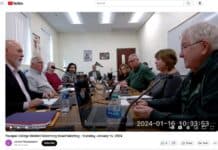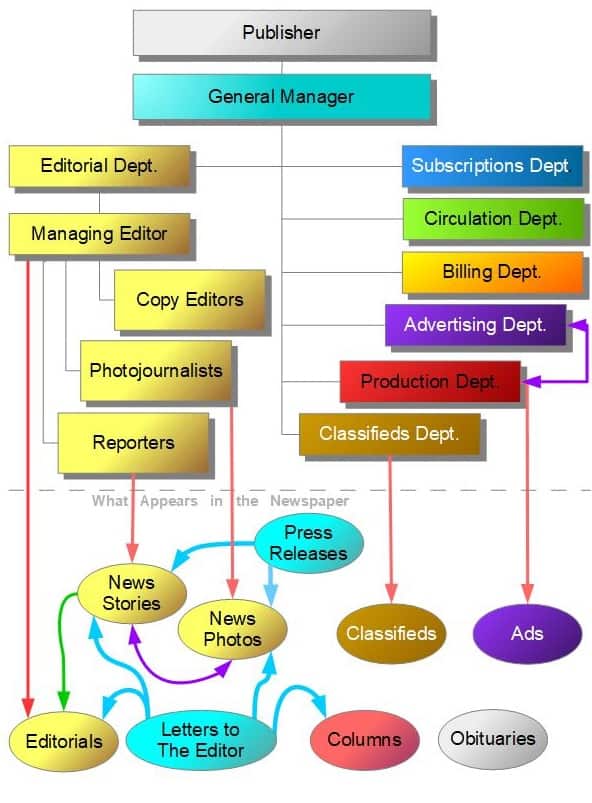There are several departments at a newspaper: Editorial aka news, Advertising, Classifieds, Circulation, Production, Subscriptions, Legal and Billing.
The Editorial Department and Advertising Departments of newspapers are separate. Editorial doesn’t tell advertising reps who to sell ads to and the Advertising Department doesn’t tell news reporters who to cover nor in what way to cover an advertising client.
This is also true for news magazines — The Economist, Newsweek, National Review, Mother Jones, The New Republic, The Weekly Standard — but many other non-news, commercial magazines print feature stories directly tied to and bankrolled by their advertisers, such as most arts and fashion magazines, including many in Northern Arizona.
For a small town newspaper, we are lucky to have a relatively large Editorial Department. All of our reporters and photojournalists have degrees in journalism or photojournalism and years of experience in the field.
The news stories written by our reporters are unbiased by design and practice. Journalists report the events as they occur, quote the figures involved, read and research documents and do their best to inform our readers about what’s going on in the community. They contact both or all sides of a issue to present readers with a clear picture. The stories they write are and should be devoid of a political stance or angle.
On rare occasions reporters will include a sentence like “So-and-so did not return calls by press time” meaning we tried multiple times, and often over several days, to contact a source but they declined to call us back and offer a quote. We leave it up to readers to decide what their refusal means about the story.
Story leads come from all sorts of sources. There are regularly scheduled public meetings by elected boards and councils our reporters attend. We receive phone calls, emails, text messages, letters and walk-ins from residents about things they’ve seen, attended, heard or read that we follow up on for a story or series. Sometimes it’s important for readers to know who our source is, like a government official or employee, other times the information is what matters, not who gave it us and we keep the source’s name confidential. If we promise confidentiality, we abide by that.
Residents send us press releases and photos about past, current or upcoming events that we edit and publish. Other press releases we decide to turn into reporter-written news stories. We use the press release as an informational guide but instead write our own story about what we learn, quoting sources or documents. These stories have a reporter’s byline at the start, e.g., “By Jon Hecht/Larson Newspapers” so readers know one of our staffers wrote it.
Our columnists are community members who offer their expertise in their fields for our readers. Some columns run weekly while others appear biweekly or once a month.
Page 4A, the Opinion Page, contains the editorial, the editorial cartoon and letters to the editor.
The editorials are the official opinion of the newspaper, which reflects the overall public opinion of the community at large. Editorials are meant to persuade or more deeply inform readers about an issue in the community. They are intentionally biased by practice and design. They opine on the news stories and give readers our view about how to interpret what reporters report.
Rob Pudim has been a professional cartoonist since 1964 and our cartoonist since Sept. 20, 1989. He reads our newspapers and draws cartoons based solely on his impression as a reader. He doesn’t ask for any guidance and we never tell him what to draw.
We encourage letters to the editor. Readers who want to comment on a news story, press release, photo or column are encourage to write them, as are readers who agree or disagree with our editorials or other letters to the editor.
Letters should be factually accurate, focus on the issues, not the authors, and also try to persuade readers to view issues from the author’s position. Yes, we fact-check them. We do not publish attacks on private individuals. Elected officials and public figures are open to criticism by the nature of their positions.
We hope this explains how our newspaper serves you, our loyal readers.
Christopher Fox Graham
Managing Editor



















